Ordering Number: 24615(Consignment Sale)
Wakizashi: Shirasaya with Koshirae (NBTHK Tokubetsu Hozon Token)
Signature: Dewa Daijo Fujiwara Kunimichi 出羽大掾藤原国路
Saya Inscription: Dewa Daijo Fujiwara Kunimichi, Blade Length: 1 shaku 8 sun 9 bu. written in 1984 by Kunzan for Nakamura Fukuji
Shinto: Wazamono, Jyojyo Saku, Yamashiro. We divide each sword into four ranks: Saijyo Saku, Jyojyo Saku, Jyo Saku, and Regular Saku, based on the swordsmith’s skill. This work by Dewa Daijo Fujiwara Kunimichi (First Generation) is ranked as Jyojyo Saku.
Habaki: Gold-covered double layer.
Blade Length: 1 shaku 8 sun 9 bu (57.3cm / 22.6in)
Curvature: 2 bu (0.6cm / 0.2in)
Mekugi Hole: 1
Width at Base (Motohaba): 3.01cm (1.2in)
Width at Tip: 2.02cm (0.8in)
Thickness (Kasane): 0.68cm (0.3in)
Sword Weight: 555 g
Era: the early Edo period around Kan'ei era (1624-1644).
Shape: slightly wide and long wakizashi with long kissaki.
Jigane: blackish jigane with intense Itame hada with Chikei.
Hamon: Niedeki Gunomemidare with many Sunagashi. Boshi is Notare and rounded.
Features: Shinto: Jojo saku ranking : Wazamono: Yamashiro
Kunimichi was the most prominent swordsmtih among the disciples of Horikawa Kunihiro. He was born around Tensho 4 (1576), and it is thought that he received the title of Dewa Daijo between Keicho 19 and 20 (1614 and 1615).
His sword is characterized by a unique hamon in Kissaki called Sampin- Boshi, which is notare and pointed. Ecchu Masatoshi, Tanba Kami Yoshimich the 1st gen and Iga Kinmichi made similar Hamon. In general, Dewa Taisho Kunimichi's swords are similar to Kunihiro's in that they are often made in Soshu-den style, and the texture of steel is visible, and Masa is mixed.
Nakamura Fukuji, for whom the sayagaki was made, was an authoritative Shinto priest and the mayor of a town in Shizuoka.
Kohirae:
Tsuba: Round-shaped shakudo tsuba with checkered pattern and golden edge with rope pattern.
Fuchikashira: Shakudo-nanako with carving of ears of rice.
Kozuka: Shakudo-nanako plate with carving of peony and Shishi-dog.
Kogai: Shakudo-nanako plate with a waterfowl.
Menuki: a picture of a straw rain cape and a mallet. The straw rain cape or mallet is a symbol of good luck and protection from evil.
From Aoi-Art: The sword and the koshirae is a well made piece. The blade pattern is a complex and turbulent, which is typical of Kunimichi. He was a disciple of Kunihiro and the jigane is very similar.
NBTHK Tokubetsu Hozon Paper
Aoi Art Estimation Paper
Whole Oshigata
Price:1,350,000JPY
Order Form
Related Items:
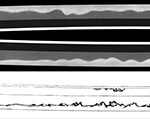 Wakizashi :Dewa Daijo Fujiwara Kunimichi
Wakizashi :Dewa Daijo Fujiwara Kunimichi
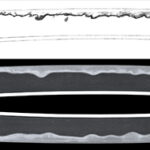 Wakizashi: Dewa Daijyo Fujiwara Kunimichi(NBTHK Tokubetsu Hozon Token)
Wakizashi: Dewa Daijyo Fujiwara Kunimichi(NBTHK Tokubetsu Hozon Token)
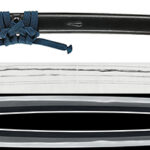 Wakizashi:Soshu Ju Ise Daijo Fujiwara Tsunahiro(Hozon Token, Tokubetsu Kicho Token)
Wakizashi:Soshu Ju Ise Daijo Fujiwara Tsunahiro(Hozon Token, Tokubetsu Kicho Token)
 Wakizashi:Omi Daijo Fujiwara Tadahiro(NBTHK Hozon Token)(NBTHK Tokubetsu Kicho Token)
Wakizashi:Omi Daijo Fujiwara Tadahiro(NBTHK Hozon Token)(NBTHK Tokubetsu Kicho Token)
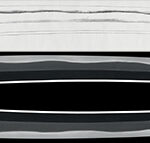 Wakizashi: Omi Daijo Fujiwara Tadayoshi (4th Generation)(NBTHK Tokubetsu Hozon Token)
Wakizashi: Omi Daijo Fujiwara Tadayoshi (4th Generation)(NBTHK Tokubetsu Hozon Token)
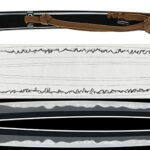 Wakizashi: Izumi no Kami Kunisada (NBTHK Tokubetsu Hozon Token)
Wakizashi: Izumi no Kami Kunisada (NBTHK Tokubetsu Hozon Token)







